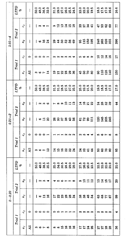19.27.
Philips Standard is applicable where screening inspection by the consumer is not possible. In fact screening does not exert such a pressure for quality improvement as the out right rejection of one or more of the entire lots. This standard uses P0.50 the point of control or indifference quality, as the basis for referencing all its sampling plans. Some notable features of Philips Standard are as follows :
1. All plans are classified by a particular point on the OC curve, the product quality for which the probability of acceptance is 0.50.
2. Producer and consumer, in effect, share equally in the risk of a “wrong” decision by any sampling plan included in the system. Thus if 2.5%, plan is used, product exactly 2.5% defective is as likely to be accepted as it is to be rejected.
3. The relative discrimination between good and bad product is approximately constant at the indifference quality or point of control. This is because, all the sampling plans in the system have the same ratio of the slope of the OC curve at p050 to the value of the quality standard Po.50.
4. A consequence of item 3 is that the producer’s risk of rejection of product at some stated amount moderately better than the quality standard is roughly comparable to the consumer’s risk of acceptance of product at the same amount worse than the standard.
5. Another consequence of item 3 is that the sample size is relatively large for plans designed for maximum consumer protection and decreases as the quality standard is relaxed.
6. Single sampling is stipulated whenever the lot is 1,000 or less. Double sampling is stipulated whenever the lot is greater than 1,000.
Philips Standard Sampling Table. Table 19.17 represents the Philips Standard.
![]()
| T O =M |
9 •-a |
qui oq d co co co o in m | q © © © in U3 Tf T)i Tji co co co co co |
o q © in in ri ri d d oi CO CO CO CO CM |
in q q in oo cd cd in CM CM CM CM |
24.5 | : c5 |
|
| Trial 2 | | | rH CM CO | CO ^* ^ ^* ^* | tc in in m co | t- CO CO CD | o rH |
|||
| «? | | | CO COS | CO C- 00 00 00 rt H H H rt | oo co ^* ^ o> tH CM CM CM CM |
Ol CO CO N CM CO CO | CM m |
|||
| Trial 1 | c7 | o o o o o | o o o o o | O O O O O | rH rH rH rH | rH | ||
| ^ co w co t~ | co oo oo oo | Oi a era oi S, | CD t> O 00 rH rH rH rH | 00 rH | ||||
| 0.21—2 | £^ »j | ©mo© © CO CO CM |
m in o © © cm cm d iri in ^ ^ ^ co cO | © © o in o iri iri CO CO CO CO CO |
32.5 32.5 32.5 32.5 | 30.0 | ||
| Trial 2 | | | tH CM CM | CM CM CM CO CO | CO CO CO CO CO | ^* ^* ^ ^* | in | |||
| C | | | CO 00 C- | t- I> 00 3 3 | CO ^ “”d* ^S* ^* rH rH rH rH rH | 00 00 00 00 1-1 r4 1-i T-l |
m CM |
|||
| Trial 1 | o o o o o | © o o o © | O © © O O | © © o o | o | |||
| e | ^ CO IO o t- | t> t> C~ 00 00 | 00 00 00 00 00 | oo cn cn cn | cn | |||
| 0-0.20 | © >■*■ | © in o o 1 © co in cm IO IO lO lO |
in m © © © CM CM © © © |
in in q © © © © | © q q © rl H ri H ^ ^ ^ |
33.5 | ||
| Trial 2 | «? | j j H H H | CM CM CM CM CM | CM CM CM CM CM | CM CM CM CM | CM | ||
| & | | | CO CO | t» t« 00 00 00 | 00 00 00 00 00 | 00 00 00 00 | 00 | |||
| Trial 1 | *-< o |
© o o o o | o © © o © | © © o © © | © © © o | o | ||
| a | ^ M IO lO lO | t> t- i> c~ i> | I> 1> t> t- t~ | o t- t- t- | 1> | |||
| Process Average | Lot size | 1-3 4-15 16-50 51-100 101-200 | 201-300 301-400 401-500 501-600 601-800 | 801-1,000 1,001-2,000 2,001-3,000 3,001-4,000 4,001-5,000 | 5,001-7,000 7,001-10,000 10,001-20,000 20,001-50,000 | 50,001-100,000 | ||

